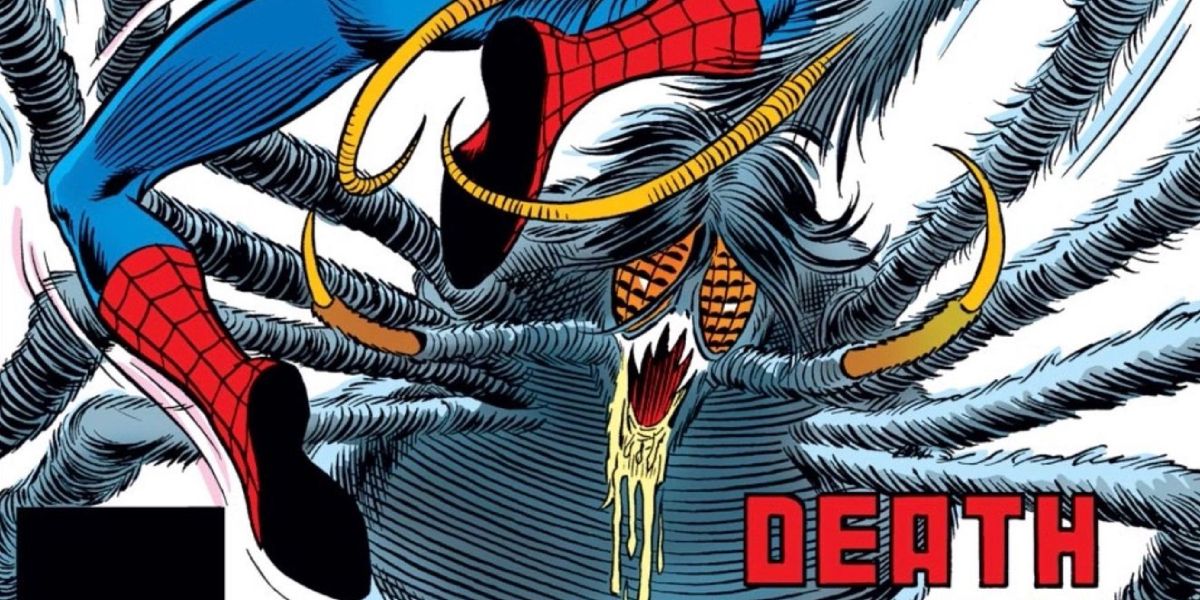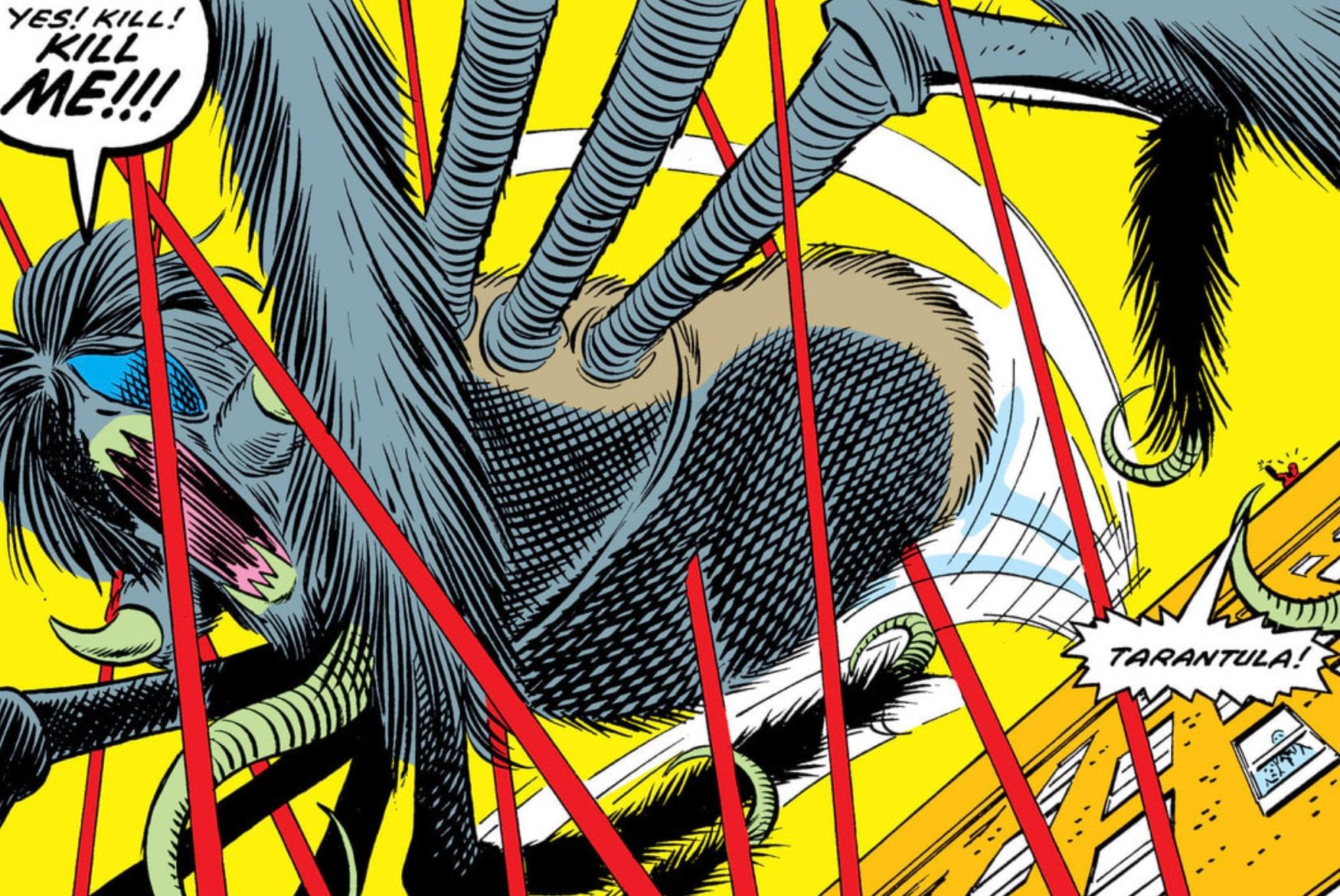The following contains spoilers for recent issues of Savage Spider-Man, on sale now from Marvel Comics.
Long before Peter Parker was turned into a giant spider creature in Savage Spider-Man, a similar fate befell a longtime enemy of his. The Tarantula, a South American terrorist created by Gerry Conway and Ross Andru in Amazing Spider-Man (vol. 1) #134, had often been depicted as a lackey for more powerful masterminds who wanted to take down the wall-crawler. With his poison-spiked boots, he was assuredly dangerous, but never on the level of Green Goblin or Doctor Octopus. However, that all changed when a horrible industrial accident turned him into a monster.
In Amazing Spider-Man (vol. 1) #234 (by Roger Stern and John Romita Jr.), Spidey is investigating corruption in the Brand company, a subsidiary of Roxxon Energy Corporation, when he stumbles upon a sinister experiment being conducted on Tarantula to endow him with powers equal to that of the web-slinger. Just as Parker is about to shut the ghastly procedure down, he’s interrupted by the antihero phantom, Will o’ the Wisp, whose incorporeal nature is itself a result of a failed Brand experiment. Distracted by the Wisp’s vengeful attack on the plant, everyone forgets that Tarantula is still soaking in a chemical bath.
When Wisp sends electrical currents into the toxic soup, it causes an explosion. Emerging from the flames is Tarantula, but he is now more spider than man. His teeth have been replaced by mandibles, he has grown extra limbs equipped with sharp talons, and large compound eyes cover his mutated face. He wildly lashes out at everyone, including Peter. As time passes, he transforms into a more primal state and begins to lose any sense of humanity. Spider-Man feels pity for his foe, even a villainous wretch like Tarantula deserves a better fate than what Brand has imposed on him.
The Tarantula, in his mutated arachnid form, terrorizes New York, but things come to a head in Amazing Spider-Man (vol. 1) #236 (by Roger Stern and John Romita Jr.) when he attempts to feed on Brand’s executive director, James Melvin. While Peter is disgusted by Melvin’s involvement in Tarantula’s transformation, he is still compelled by his sense of responsibility to protect him. Having shed any resemblance of his human form, Tarantula screams for onlooking police to kill him as he lunges off a building. They oblige and shoot him down and the pitiful monster splatters across the street below.
For the Tarantula, becoming a literal spider was a fate worse than death. Even though he was a hardened killer, the psychological torment of what he had become was too much for him to bear. In the current Savage Spider-Man miniseries (by Joe Kelly and Gerardo Sandoval), Peter Parker experiences the same horror that was once forced upon his deceased foe. Exposed to the A-Plus drug, the web-slinger devolves into an arachnid state very similar to that of the Tarantula. He becomes more violent and impulsive, loses the ability to communicate, and, worst of all, it is a struggle for him to remain in control of his actions.
While Peter recently had a second transformation in Savage Spider-Man #3 (by Joe Kelly, Gerardo Sandoval, Mike Bowden and Nick Bradshaw) that reverted him to a more human form, it is clear that he won’t forget his dehumanizing experience as a giant spider creature any time soon. The Spider-Man books have a history of body horror going back to when Peter grew extra arms in Amazing Spider-Man (vol. 1) #100 (by Stan Lee and Gil Kane). However, additional appendages aside, at least he still looked human on that occasion. The trauma from his most recent transformation into a feral spider-like creature will haunt him for a long time. While his phase as a spider has undoubtedly increased his empathy for his long-dead enemy, it’s probably an experience he doesn’t wish to repeat.



